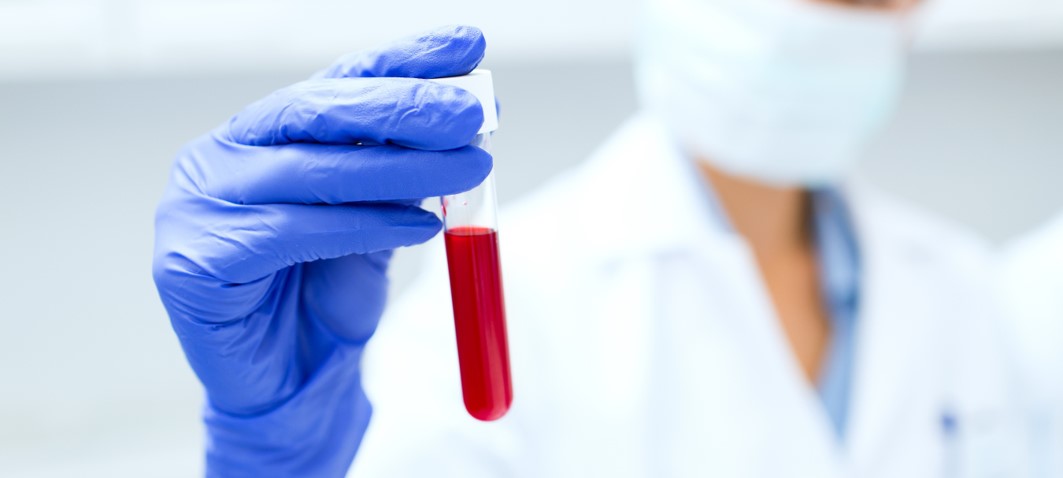
Blood tests are done for many reasons – for example, to help diagnose disease or, conversely, to rule out the possibility of a disease even when symptoms suggest its presence. Whether caring for an individual patient or responding to a worldwide epidemic, rapidly establishing the cause of disease is fundamental to quality care.
Established Methods of Diagnosis: Microscopy, RDTs, and PCR
Classic microscopy is considered to be the gold standard – the most effective approach to the diagnosis of infectious disease, particularly malaria. The history of microscopy goes back to the late 1660s, when Antony van Leeuwenhoek began to grind his own lenses and make simple microscopes. Modern microscopy started in 1931, when a pair of German scientists invented the electron microscope, which directs a beam of speeded-up electrons at a cell sample. As the electrons are absorbed or scattered by different parts of the cell, they form an image that can be capture by an electron-sensitive photo plate. This model enables scientists to view extremely small parts magnified as much as one million times.


The Limitations of Rural Environments
In many environments, particularly in developing countries, the traditional solutions are simply inappropriate or ineffective. For example, in rural areas, the sophisticated tools and professional expertise necessary for microscopy and PCR generally are unavailable, and care relies on RDTs. But RDTs can be inaccurate at low pathogen concentration, sometimes resulting in misdiagnosis and contributing to unnecessary deaths.
Another reason RDTs are so widely used in developing countries is that both microscopy and PCR have a high price point. When it comes to microscopy, the cost is linked to the number of patients diagnosed at a facility per year. The fixed costs (the microscope, staff training, and lab supervision) are the same regardless of laboratory throughput, and these costs are more widely distributed as the caseload increases, reducing the cost of each individual diagnosis. In places where there are fewer patients, the costs per case are very high compared to RDTs, which have a fixed, low, per-test cost.
The PCR option is also costly, with the expense of instruments ranging between $4,000 and $10,000 – a price that essentially confines PCR to laboratories that are well funded (such as universities) and excludes field-based health initiatives.
To Err is Human

And while microscopy and PCR are the most complex, even RDTs – theoretically the simplest of these methods to implement – rely on careful test implementation. Studies have shown that the accuracy of RDT testing is highly user-dependent. Health workers in remote areas with little supervision are relying on instructions provided by the manufacturer, and mistakes in preparation and interpretation are common.
A related challenge, specifically with regard to microscopy, is the turnaround time. The process of microscopy is slow and complex, requiring about fifteen minutes of manual labor for the preparation of a sample, which requires a thin smear and staining – plus thirty-five minutes of time for scanning. This means a total of fifty minutes per slide. In addition, direct microscopy can have low sensitivity and a sample may, in certain situations, take days or even weeks to return results.
The Beginnings of a Revolution
In the last couple of years, a number of potentially disruptive technologies and products have been developed that offer new solutions to the question of effective blood diagnostics at the point of care.
Cor, for example, is a two-year-old Silicon Valley startup that helps measure heart health with at-home blood testing. Founded by former Apple executive Bob Messerschmidt, Cor allows individuals to track issues such as blood pressure and cholesterol. The system includes disposable cartridges with very fine needles, similar to what’s used for glucose testing, that draw a tiny drop of blood. The cartridges are then inserted into the Cor reader, which sends blood chemistry information into the cloud to be analyzed and sends a comprehensive update to an individual’s smartphone within five minutes. Cor is careful to define their offering as providing lifestyle guidance, but not medical diagnosis. The company – which sells its product for $299 (plus $10/month for the disposable cartridges) – employs just a handful of people, but has already raised $1.03 million in seed funding.
Another interesting product is being developed by a year-old liquid biopsy startup called Freenome, which has created early detection tests for cancer using a non-invasive blood test (instead of an invasive biopsy). The system is based on a fusion of genomics research and computational expertise, with a learning engine that detects cancer by evaluating the dynamic collection of genetic material floating in the blood (cell-free). The Freenome platform, which helps individuals track their health on an ongoing basis, recently raised a seed-round of $5.55 million led by Andreessen Horowitz (and coming from Andreessen Horowitz’s months-old, $200 million Bio Fund).
Theranos, a blood-testing technology company founded in 2014 that quickly became a media sensation, has not had an easy ride. Theranos claimed it would revolutionize blood testing using a pinprick of blood – and that it could run up to seventy lab tests in record time. In 2015, it won the right to process a complex, authoritative blood test outside of a lab. Then Theranos’ troubles began, which included a Wall Street Journal investigation (last October) that uncovered problems with the accuracy of the company’s technology and the state of its labs. The FDA revoked the federal license of one of the labs and banned the company’s CEO, Elizabeth Holmes, from owning or operating labs for at least two years. But the other week, in a surprising twist, the company unveiled a new, all-in-one Zika-detecting tabletop minilab, which runs automated tests using blood and urine samples. Holmes hopes to obtain FDA approval for the device under the new emergency use authorization (EUA) for Zika detectors and, with luck, the product will put the brakes on the company’s downward spiral and turn around its future.
The Race for CBC Testing FDA Approval
The Holy Grail of diagnostics is the ability to provide Complete Blood Count (CBC) testing at the point of care.
The importance of CBC testing – the blood tests most commonly prescribed by doctors – at the point of care cannot be underestimated, and that goal is behind the work of Sight Diagnostics, another young company pioneering an innovative medical device for faster, cheaper, fully automated blood diagnostics. Sight Diagnostics’s first application is malaria testing which, in of itself, represents a total addressable market estimated at $600 million per year. But the company is also developing its next-generation product that will be able to conduct CBC – addressing a major need in what is considered to be no less than a $5 billion global market.
Currently, 75% of clinics are unable to conduct CBC tests on-site and by law must send blood samples to certified labs. However, after receiving highly accurate clinical results and consulting world-leading regulatory experts, Sight Diagnostics believes that theirs will become the first medical device to receive a waiver from this certification requirement, making the Sight Diagnostics solution the first CBC testing device available for all clinics. The company, which recently received its first US patent (with approval pending for an additional thirteen patents), signed a contract with European medical device distribution company Biosynex for distribution in Africa and Europe, and it signed a similar contract with Becton Dickinson for distribution in India. In addition, it signed an agreement with a Chinese distributor that is undertaking responsibility for securing regulatory clearance for Sight Diagnostics’ solution in China.
A Better Tomorrow
While automated CBC diagnostic systems already exist, they generally cost well over $35,000 and require liquid reagents. The few less expensive point-of-care tests that exist require regular calibration and are so inaccurate that they are not used in the developed world.
Accurate testing at the point of care could provide rapid, actionable information, providing the data that is needed to make informed healthcare decisions and reducing time wasted on unnecessary follow-up appointments and hospitalizations.
The new solutions being developed, which harness emerging technologies to provide timely and affordable testing, are critical because they can be effectively implemented in both urban and rural areas around the globe – and, as a result, they are essential in the healthcare community’s ongoing fight to save lives.
To find out more about Sight Diagnostics and other investment opportunities on our platform, contact our Investor Relations team or visit our website.










